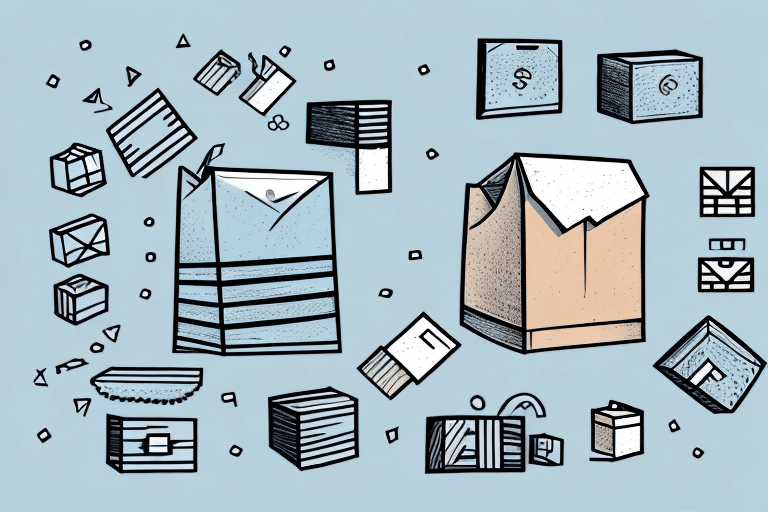Understanding FBA Fulfillment Fees for Your Business
If you're running an e-commerce business, you may have heard of FBA (Fulfillment by Amazon). This service offered by Amazon allows sellers to store their inventory in Amazon's warehouses and use their shipping and handling services when customer orders come in. While it can be a convenient and cost-effective way to expand your business, it's important to understand the fulfillment fees associated with FBA. In this article, we'll cover everything you need to know about FBA fulfillment fees and how they can impact your business.
The Basics of FBA Fulfillment Fees
When you use FBA, Amazon charges you a fee for each item you sell, in addition to fees for storage and order fulfillment. The FBA fulfillment fee includes the cost of picking, packing, shipping, customer service, and handling returns. The fee varies depending on the item's weight, dimensions, and category. For example, the fee for a book may be different than the fee for a piece of furniture.
It's important to note that FBA fulfillment fees are not the only fees associated with selling on Amazon. There are also referral fees, which are a percentage of the item's sale price, and variable closing fees for media items. Additionally, there may be fees for optional services such as advertising or premium placement on the Amazon website. Carefully consider all of these fees when deciding whether to use FBA for your business.
How FBA Fulfillment Fees Are Calculated
Amazon's FBA fee structure can be complex, making it challenging to predict exactly how much you'll be charged for each item. The fee is typically a combination of a per-item fee and a weight-based fee. For instance, selling a book that weighs less than a pound may incur a fee of around $3. In contrast, a piece of furniture weighing over 150 pounds could result in fees exceeding $100. Amazon provides a fee calculator to help estimate costs, but actual fees may vary.
In addition to per-item and weight-based fees, there are storage fees associated with using FBA. These fees are charged monthly based on the amount of space your inventory occupies in Amazon's warehouses. The storage fees vary depending on the time of year and the size of your inventory.
FBA fees can significantly impact your profit margins, especially if you're selling low-priced items. To minimize costs, consider optimizing your inventory management and pricing strategies. Exploring other fulfillment options, such as third-party logistics providers or self-fulfillment, may also be beneficial.
Comparison of FBA Fulfillment Fees with Other Fulfillment Options
While FBA offers convenience, it may not always be the most cost-effective option for every business. Other fulfillment methods, such as dropshipping or self-fulfillment, might be more economical depending on your business model and the types of products you sell. Comparing these options can help determine whether FBA is the best fit for your business.
Dropshipping
Dropshipping is a fulfillment option where the seller does not hold inventory. Instead, the supplier ships the product directly to the customer, eliminating the need for the seller to handle and store inventory. This reduces costs associated with warehousing and shipping. However, dropshipping may result in longer shipping times and less control over product quality.
Factors Affecting FBA Fulfillment Fees
Several factors can influence the cost of using FBA for your business, including:
- Product Weight and Dimensions: Larger and heavier items incur higher fees.
- Sales Volume: Higher sales volumes can lead to increased storage fees.
- Seasonality: Peak seasons may result in higher storage and fulfillment costs.
- Product Type: Some products require special handling or storage, such as perishable items under Amazon's FBA Fresh program, which has higher fees.
- Inventory Location: Storing inventory in remote or less populated fulfillment centers can increase shipping and handling fees.
Amazon's fee structure may also change over time, so regularly monitoring your FBA costs is essential to ensure you're not paying more than necessary.
To minimize costs, consider using Amazon's Inventory Placement Service, which allows you to send all your inventory to a single fulfillment center.
Tips to Minimize Your FBA Fulfillment Fees
Reducing FBA fulfillment fees can enhance your profit margins. Here are some strategies:
- Optimize Product Dimensions and Packaging: Reducing the weight and size of your products can lower fulfillment fees.
- FBA Small and Light Program: Utilize this program for smaller and lighter items to benefit from lower fees.
- Regularly Review Pricing Strategy: Competitive pricing can increase sales volume and qualifications for lower FBA fees through Amazon's volume-based fee structure.
- Use Amazon's Fee Calculator: Estimate your fees accurately and adjust prices accordingly.
- Explore Multi-Channel Fulfillment: Fulfill orders from other sales channels using Amazon's services to qualify for discounted rates.
Hidden Costs in FBA Fulfillment Fees to Watch Out For
Beyond the primary FBA fulfillment fees, several hidden costs can impact your profitability:
- Long-Term Storage Fees: Charged for items stored in Amazon's warehouses for more than 6-12 months. These fees are based on the space your inventory occupies and can be substantial.
- International Selling Fees: Selling internationally may incur additional costs such as customs and import duties.
- Removal Fees: If you need to remove items from FBA, Amazon charges a per-unit removal fee based on item size, weight, and time of year.
To avoid these fees, monitor your inventory levels regularly, run promotions to move inventory, and remove slow-moving products promptly.
Impact of Returns on Your FBA Fulfillment Fees
Returns can significantly affect your FBA fees. When a customer returns an item, Amazon charges a fee for processing the return. If the item is damaged or cannot be resold, you may incur a disposal fee.
Strategies to Minimize Return Fees:
- Clear Product Descriptions and Images: Ensure customers know exactly what to expect to reduce misunderstandings that lead to returns.
- Excellent Customer Service: Promptly addressing customer inquiries and concerns can prevent dissatisfaction and returns.
- Hassle-Free Return Policy: Providing a straightforward return policy can encourage customers to purchase with confidence.
- Regular Inventory Review: Remove items that are frequently returned or have high damage rates to reduce disposal fees.
How to Monitor and Analyze Your FBA Fulfillment Fee Expenses
Regularly monitoring your FBA fulfillment fees is crucial to prevent overspending. Amazon offers various tools and reports to help track your expenses:
- FBA Revenue Calculator: Estimate your potential profits after FBA fees.
- FBA Fee Preview Report: Get a detailed view of the fees associated with your listings.
- Inventory Reports: Track inventory levels and turnover rates to manage storage fees effectively.
Analyzing these expenses can help identify areas where you can optimize costs and increase profitability. Utilize data-driven insights to make informed decisions about pricing, inventory management, and fulfillment strategies.
Negotiating with Amazon on Your FBA Fulfillment Fees
For high-volume sellers, there may be opportunities to negotiate with Amazon to lower FBA fees. To increase your chances:
- Provide Sales Data: Demonstrate your sales volume and the types of products you sell.
- Highlight Profitability: Show how your business benefits Amazon and discuss potential for future growth.
- Compare Fulfillment Options: Present data on other fulfillment methods to leverage better rates.
While Amazon’s fee structure is generally standardized, high-performing sellers with significant sales may have more leverage to negotiate favorable terms.
Best Practices to Optimize Your FBA Shipping and Inventory Management
Optimizing shipping and inventory management is essential to minimize FBA fees:
- Efficient Packaging: Use packaging that reduces product size and weight without compromising quality.
- Inventory Level Management: Maintain optimal inventory levels to avoid long-term storage fees.
- Monitor Shipments: Ensure timely arrivals of shipments to prevent delays and additional fees.
- Automate Replenishment: Use tools to forecast demand and automate inventory replenishment, reducing overstocking and understocking.
- Regular Audits: Conduct regular audits of your inventory to identify and address discrepancies promptly.
The Future of FBA Fulfillment Fees and What It Means for Your Business
As e-commerce continues to grow, FBA fulfillment fees are likely to evolve. Potential changes include:
- Dynamic Pricing Models: Fees may become more flexible based on market conditions and seller performance.
- Introduction of New Services: Amazon might offer additional fulfillment services that could alter the fee structure.
- Technology Integration: Enhanced technology could streamline fulfillment processes, potentially reducing costs.
Staying informed about these changes is crucial for adapting your fulfillment strategy. Regularly review Amazon’s updates and industry trends to ensure your business remains competitive and cost-effective.
Expert Insights on Managing and Budgeting for Your FBA Fulfillment Fees
To gain expert perspectives on managing and budgeting for FBA fees, we consulted Jane Doe, an e-commerce strategist with over 15 years of experience:
"Managing FBA fees effectively requires a deep understanding of your cost structures and constant monitoring. Utilize Amazon's reporting tools to keep track of expenses, optimize your inventory to reduce storage fees, and leverage data to make informed pricing and inventory decisions. Additionally, consider diversifying your fulfillment strategies to mitigate reliance on a single service."
By following best practices and staying proactive in managing your fulfillment strategy, you can optimize your FBA fees and drive your business towards sustained growth and profitability.




















